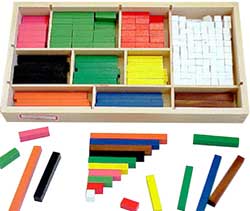Crawling our Way to the End of Chapter 3
This week and next, I am going to finish exploring the end of Chapter 3 from Teaching Number in Preschool and Kindergarten. I know that this is taking a really long time, but I am finding that spending this much time on the details of this book to be worth the effort.
Encourage the child to make sets with moveable objects.
Hmmmm. Here Kamii says that focusing on one set of objects limits our ability to explore number with children. If you present a group of objects to the child, i.e., a small basket of apples, and then ask, “How many apples are there?” There is one right answer and the child knows that. Asking a child to count objects is not a good way to help them quantify objects.
Children are better served if we find ways for them to observe sets and make judgements about them. For example, if you put 6 apples on the table and 3 oranges, and then ask the child to make observations about the 2 sets of objects, the child is presented with more options for thinking about number. The child determines which has more, which has less, or if they are the same.
However, the above example is still not as useful as having the child make his own sets. Ask the child to bring enough fruit so that every child in the group gets one piece. The child then has to start at zero and use one-to-one correspondence to provide 1 fruit for every place setting. The child has to decided when to stop, when he needs more, or if there is not enough.
Again, the teacher needs to understand the that there is a vast difference between a child putting one piece of fruit on every plate and the child knowing how many pieces of fruit are needed in relation to every plate. It is the child’s mental construct of that relationship that supports the ability to quantify.
She goes on to criticize materials that are already grouped in sets that cannot be taken apart. There are manipulatives that come in predetermined sizes representing 1, 5, 10, 100, etc. However, the child only sees each of these objects as “1” even though the adult sees that the 5 unit is actually 5 ones put together. The 10 unit is 10 ones put together. However, if the child cannot manipulate those units on his own, they can only represent a unit of 1, regardless of their lengths.
Children can take these units rods and put them in order from shortest (unit of 1) to longest (unit of 10). However, according to Piaget (as cited by Kamii, p. 39) children are using their spatial knowledge of creating a “stair step shape” to put them in order rather than their understandings of number. This is observable. They line them up and move them around until they form the shape you see above. The logic-mathematical construct that the 2 Unit is made up of 2 individual 1 Units and the 5 Unit is made up of 5 individual 1 Units, etc., is an internal, and therefore non observable mental activity.
The way to know if this is true is to present the young child with a set like the one above and have him put 10 unit rods in order. Then present the child with a box if individual Unifix cubes (all of which are 1 Units) and see if he can make 10 rods with lengths that differ by one cube each. Not as easy as it looks.